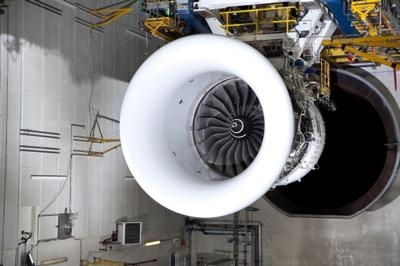Thu, Sep 16, 2021
AD 2021-17-11 Requires Initial And Repetitive Borescope Inspections (BSIs) Of The Affected IPC R1 Blades
The FAA is adopting a new airworthiness directive (AD) for certain Rolls-Royce Deutschland Ltd & Co KG (RRD) Trent XWB-75, Trent XWB-79, Trent XWB-79B, and Trent XWB-84 model turbofan engines.

This AD was prompted by reports of cracks in the intermediatepressure compressor (IPC) rotor 1 (R1) blades installed on certain Trent XWB model turbofan engines. This AD requires initial and repetitive borescope inspections (BSIs) of the affected IPC R1 blades and, depending on the results of the inspections, replacement of all 34 IPC R1 blades. The FAA is issuing this AD to address the unsafe condition on these products. This AD is effective October 12, 2021.
Supplementary Information: The FAA issued a notice of proposed rulemaking (NPRM) to amend 14 CFR part 39 by adding an AD that would apply to certain RRD Trent XWB-75, Trent XWB-79, Trent XWB-79B, and Trent XWB-84 model turbofan engines. The NPRM published in the Federal Register on May 28, 2021 (86 FR 28716). The NPRM was prompted by reports of cracks in the IPC R1 blades installed on certain Trent XWB model turbofan engines. The NPRM proposed to require initial and repetitive BSIs of the affected IPC R1 blades and, depending on the results of the inspections, replacement of all 34 IPC R1 blades with parts eligible for installation. The FAA is issuing this AD to address the unsafe condition on these products.
The European Union Aviation Safety Agency (EASA), which is the Technical Agent for the Member States of the European Community, has issued EASA AD 2020-0277, dated December 11, 2020 (referred to after this as “the MCAI”), to address the unsafe condition on these products. The MCAI states:
- Occurrences have been reported of finding cracked IPC R1 blades on certain Trent XWB engines that were close to their first planned refurbishment shop visit.
- This condition, if not corrected, could lead to blade failure and consequent engine inflight shut-down (IFSD), possibly resulting in reduced control of the aeroplane.
- To address this potential unsafe condition and avoid dual engine IFSD, Rolls-Royce issued the inspection NMSB to provide inspection instructions and the NMSB to provide information on threshold and intervals.
- For the reasons described above, this [EASA] AD requires repetitive inspections of the affected parts and, depending on findings, accomplishment of applicable corrective action(s).
You may obtain further information by examining the MCAI in the AD docket at www.regulations.gov by searching for and locating Docket No. FAA-2021-0381.
More News
States That Current Process is Damaging National Aerospace Development US Senator Jerry Morgan is pushing the FAA to speed up the process for rocket launch licensing. He argues tha>[...]
From 2015 (YouTube Edition): Model Aviator Aims For Full-Scale Career While at the 2015 Indoor Electric RC Festival, referred to as eFest, ANN CEO and Editor-In-Chief, Jim Campbell>[...]
Dave Juwel's Aviation Marketing Stories ITBOA BNITBOB ... what does that mean? It's not gibberish, it's a lengthy acronym for "In The Business Of Aviation ... But Not In The Busine>[...]
Aero Linx: Cardinal Flyers Online The Cardinal Flyers Online Web site was created and is maintained by me, Keith Peterson. My wife Debbie and I have owned a 1976 RG since 1985. Wit>[...]
Clearance Void If Not Off By (Time) Used by ATC to advise an aircraft that the departure release is automatically canceled if takeoff is not made prior to a specified time. The exp>[...]
 Senator Pushes FAA to Accelerate Rocket Launch Licensing
Senator Pushes FAA to Accelerate Rocket Launch Licensing Classic Aero-TV: RJ Gritter - Part of Aviations Bright New Future
Classic Aero-TV: RJ Gritter - Part of Aviations Bright New Future Aero-FAQ: Dave Juwel's Aviation Marketing Stories -- ITBOA BNITBOB
Aero-FAQ: Dave Juwel's Aviation Marketing Stories -- ITBOA BNITBOB ANN's Daily Aero-Linx (10.27.24)
ANN's Daily Aero-Linx (10.27.24) ANN's Daily Aero-Term (10.27.24): Clearance Void If Not Off By (Time)
ANN's Daily Aero-Term (10.27.24): Clearance Void If Not Off By (Time)



